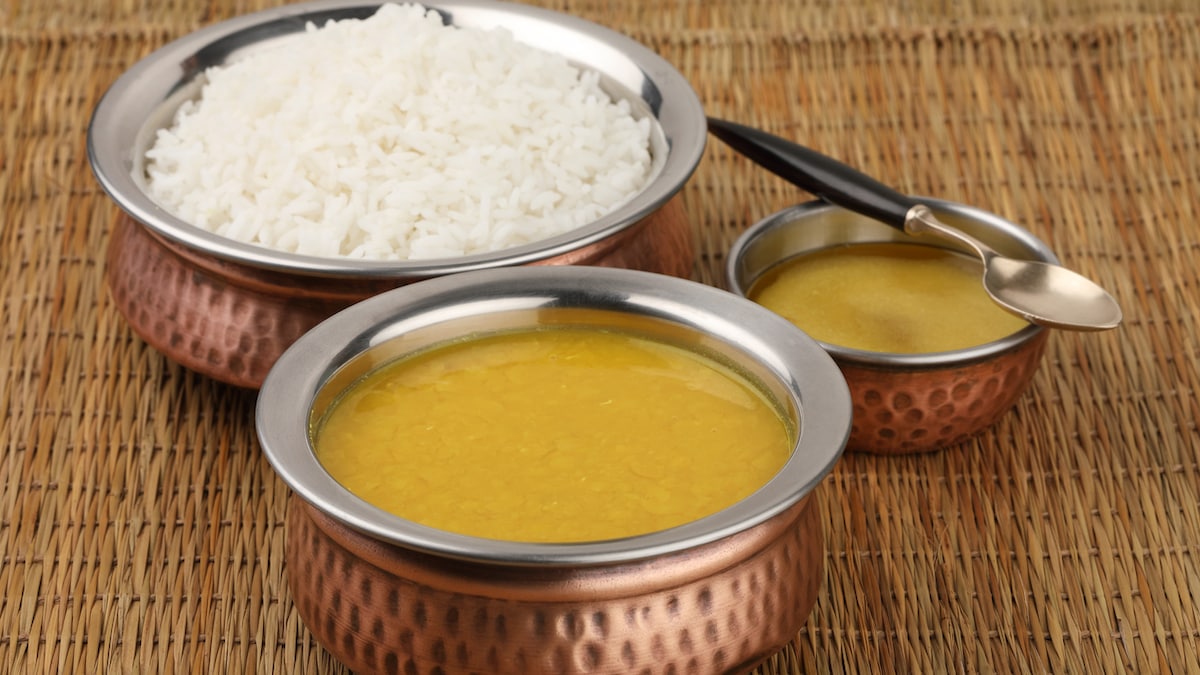
In India, dal-chawal defines comfort. A bowl of flavourful dal with a portion of rice makes for a soulful meal, especially for lunch. Besides, the combination is easy to cook and loads you with various essential nutrients for the body to function well. But have you ever felt bloated after eating a meal? You surely have experienced it at some point in life. Did you wonder why it happens? Fret not, nutritionist Rashi Chowdhury has got your back. She recently took to Instagram to share the major reasons for your bloating after a dal-chawal meal. Let’s take a look.
Also Read:From Desi To Sushi: The Epic Transformation Of Dal and Rice Leaves Internet Divided
Why Do You Feel Bloated After Eating Dal-Chawal?
We all know bloating usually occurs due to the build-up of gas in the digestive system. This further makes it difficult for you to break the food in your gut and digest it well, further leading to bloating and indigestion. And the phenomenon usually happens due to our food choices. According to Rashi Chowdhury, lentils can often be sensitive to the gut due to their lectin content. According to the Harvard School of Public Health, “Lectins can often cause red blood cells to clump together, which further produce nausea, vomiting, stomach upset, and diarrhea.”
Moreover, according to a report by the Cleveland Clinic, fibre, when eaten in excess, may end up causing gas, bloating, diarrhea, and irritated gut health, further disrupting the digestive system.
Also Read:Chef Kishwar Chowdhury On Mumbai Street Food, Dal Chawal, Diversity In The Kitchens And More
How To Eat Dal-Chawal Without Getting Bloated?
Rashi Chowdhury went on to share a few simple tricks to enjoy a comforting bowl of dal-chawal without causing any harm to your digestion.
1. Soak dal in a mix of apple cider vinegar and water:
The nutritionist suggests that soaking dal in ACV and water overnight can make it easy to cook and digestion-friendly, further reducing the risks of bloating.
2. Boil your dal well:
Boiling dal helps lower the lectin content, further making it soft and easy to digest. But that doesn’t mean you have to make the dal too mushy. Just make it soft to avoid any bite while consuming.
3. Add ginger and hing to your dal recipe:
What you add to the dal while cooking also helps define its character. Adding ingredients like ginger and hing not only makes your dal flavourful and aromatic but also aids digestion.
The expert further suggests that if none of the above tips work for you, then it is important to consult an expert and fix your gut issues for healthy living. And always remember controlling the portion size of your meal is the best way to eat healthy and stay fit – moderation is the key!
About Somdatta SahaExplorer- this is what Somdatta likes to call herself. Be it in terms of food, people or places, all she craves for is to know the unknown. A simple aglio olio pasta or daal-chawal and a good movie can make her day.





